How to grow asparagus
These tender spears are easy to grow but you’ll need to be patient to reap the benefits


The asparagus-growing season is short, from May through June, and you won’t reap the best harvest for three years after planting. But for lovers of these delicately flavored, tender spears, the wait is worth it. Asparagus plants like a sunny position, protected from wind. Once they are established, this perennial crop will produce tasty shoots for 10 to 15 years.
If you want to learn how to grow asparagus so that it can join the ingredients in your kitchen garden, this is what you need to know…
How to grow asparagus
There are a few steps to take for beginners to growing asparagus to learn first.
Choose the sex of your plant
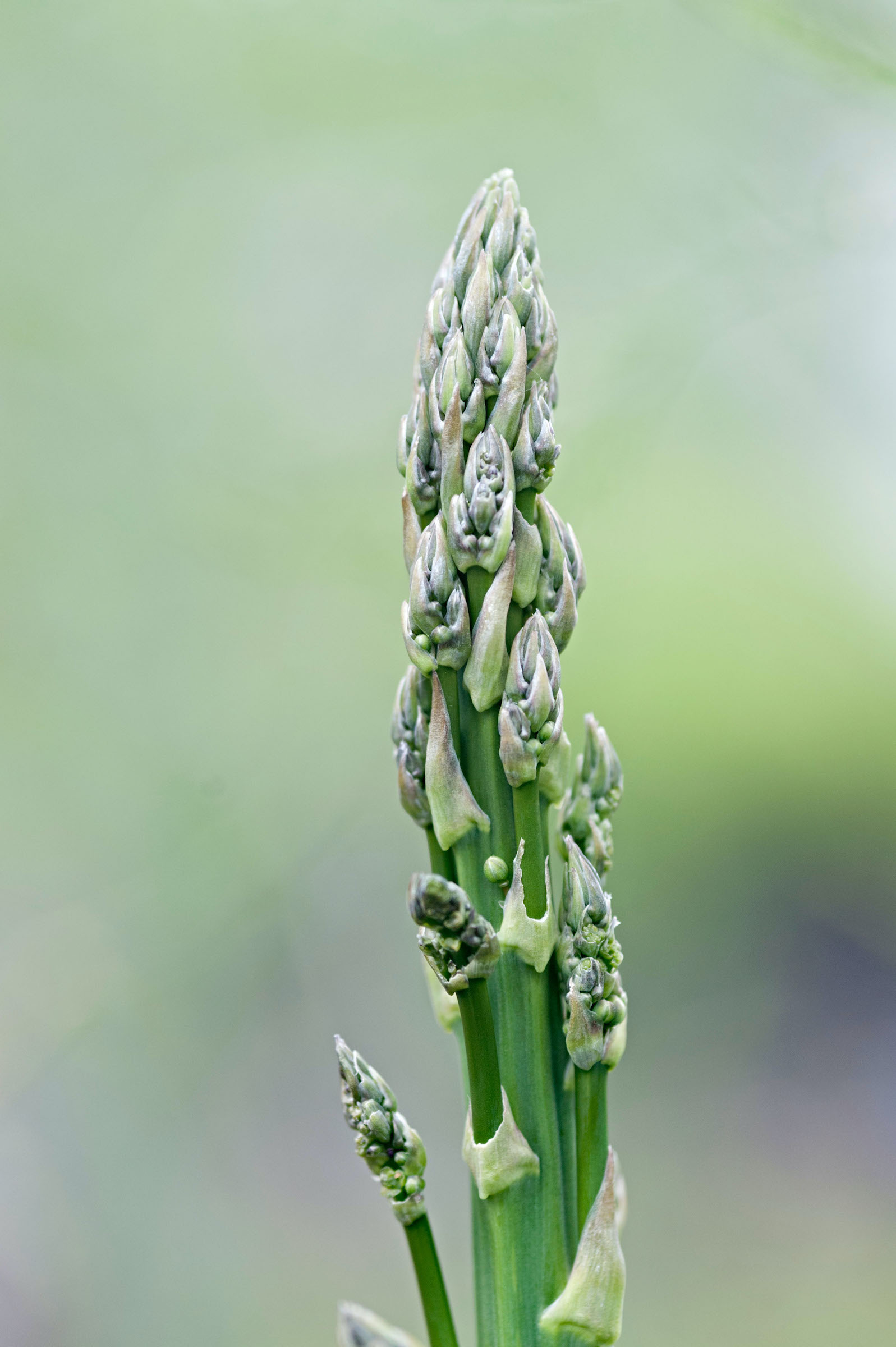
Really! Asparagus plants can be either male or female – and you’ll need both in your veggie bed if you want them to pollinate and produce seeds that you can then sow. However, most gardeners will grow asparagus plants from crowns, which you can buy as either male or female.
Male asparagus plants tend to have thicker, taller stems and are more productive, and are prized for their sweetness and tenderness. Female asparagus spears are slimmer and smaller, and are less prolific.
You can identify female plants as they produce seeds and berries, and don’t have stamens at the center of their flowers. The male flowers have small yellow stamen.
Growing asparagus from crowns
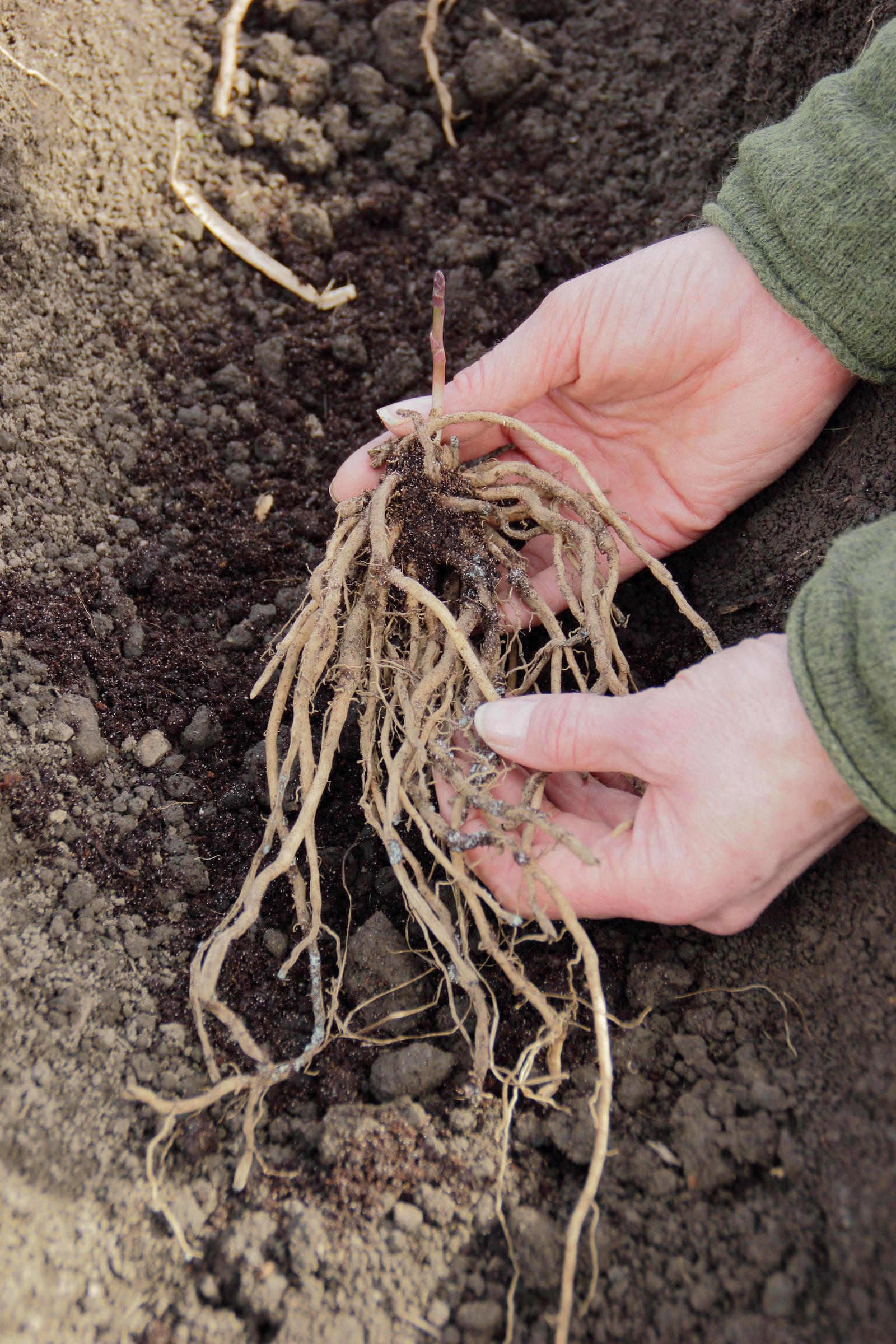
For a faster crop – two years from planting, instead of three when growing from seed – then plant asparagus crowns. These are dormant plants that are one year old.
The crowns should be placed at least 12 inches apart and 6 inches deep. The roots are delicate, so take care not to break these when planting. The crowns will dry out quickly if left out in the sun, so plant them quickly to keep them fresh and healthy.
Prepare the soil for planting by adding a bucket of compost or well-rotted farmyard manure every yard, then digging it in. If your soil is heavy and clay-based, add grit to the soil to improve drainage for better growing conditions.
To give your asparagus plants the best chance of success, dig a trench and line the bottom with manure of compost. Return the soil you have dug out to the trend, mounding it up to form a ridge. Space the crowns along the ridge, with their roots over the edges, then cover the roots with 3 inches of soil and firm the plants in.
Water the crowns and mulch with more compost or manure.
Growing asparagus from seed
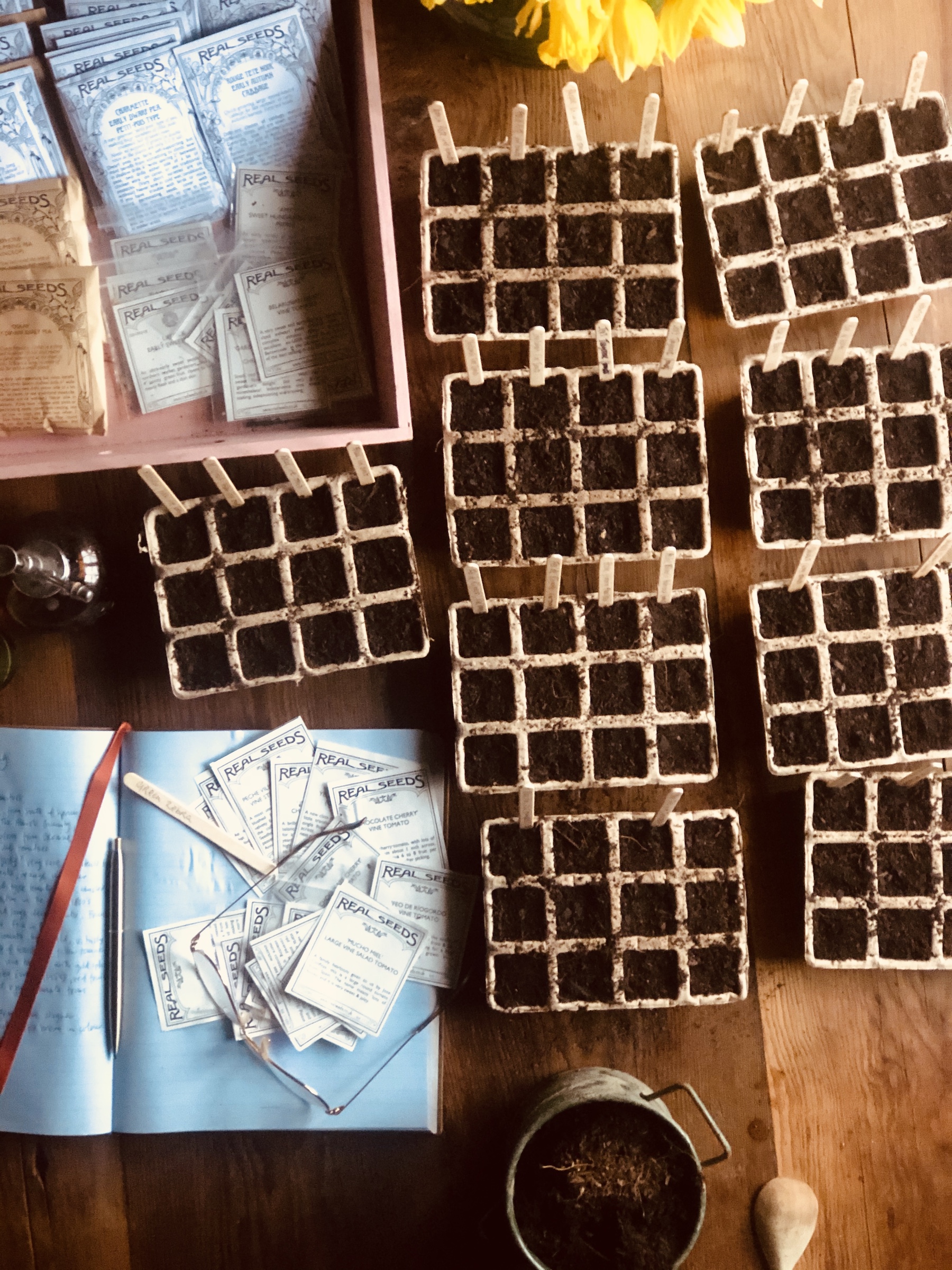
While asparagus is typically grown from crown or young plants, you can propagate them from seed that you’ve collected from a previous crop, or bought.
Sow seeds indoors from February, planting them singly in modules with seed compost. When the seedlings are well developed, harden them off, ready to plant outside, by moving them to a cool space, such as a shed, or leaving them outside for extended periods of time during the day.
You can also sow asparagus seeds directly into the ground in March and April. Create drills 1 inch deep and at least 12 inches apart. Thin the seedlings to 6 inches apart as they grow, and protect them from snails and slugs.
Can asparagus be grown in pots?
While asparagus can be planted in pots or containers as a vegetable garden container idea, especially with their clear drainage benefits, the compost and soil is generally exhausted within just a few years and typically asparagus harvests peak after five years. For this reason, growers tend to invest their time in planting asparagus in the ground or raised garden beds, so that they can gain an extra 15 to 20 years of future superfood harvests.
Companion planting for asparagus
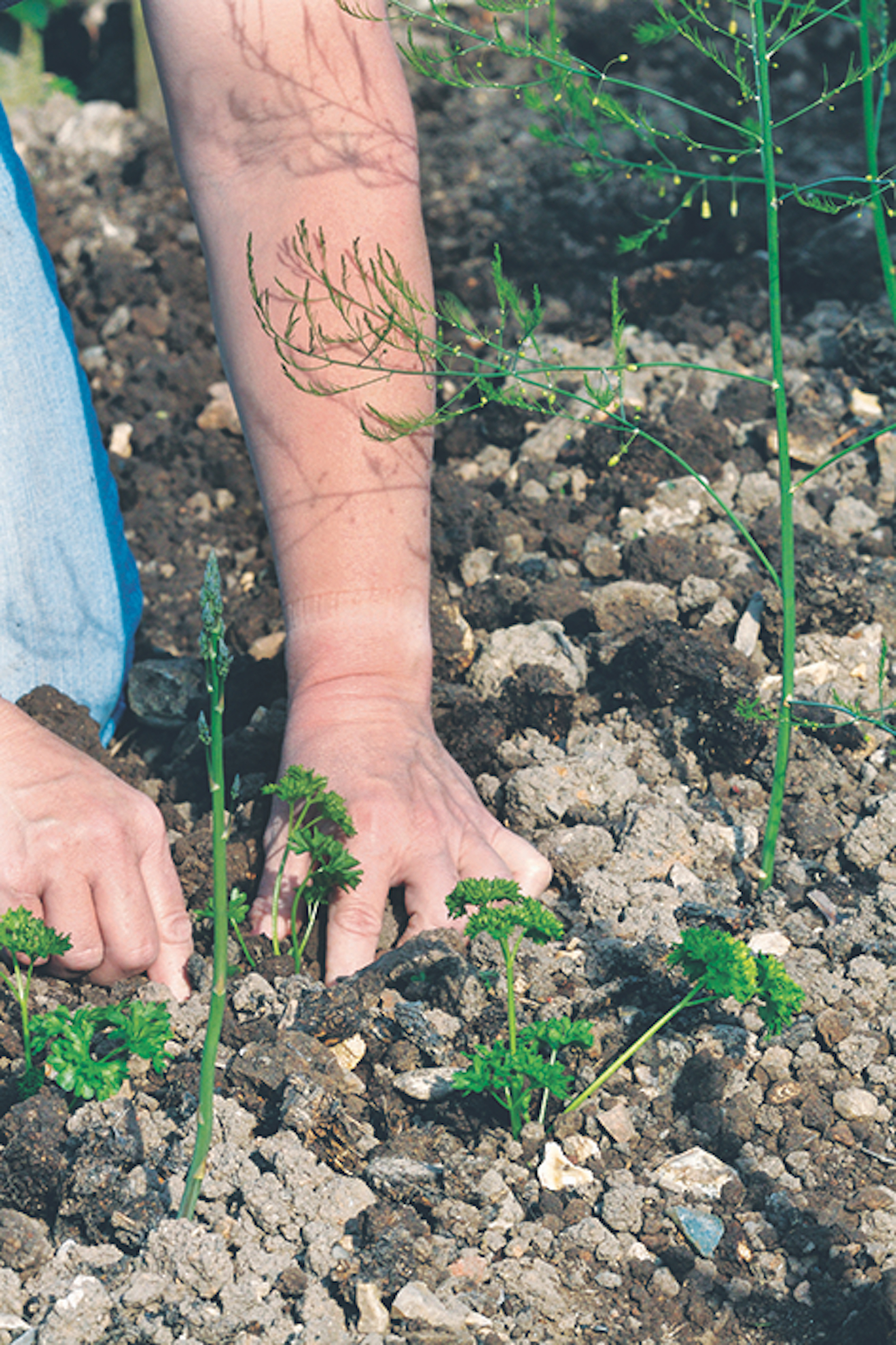
While asparagus can happily grow beside any plant that enjoys similar conditions, certain crops make excellent companion plants.
Interplanting with parsley and basil is said to deter the asparagus beetle, which feed on asparagus stems and leaves and weaken the plants.
Tomatoes are another excellent companion plant for asparagus, as the release a chemical called solanine, which repels asparagus beetles.
Tending asparagus plants
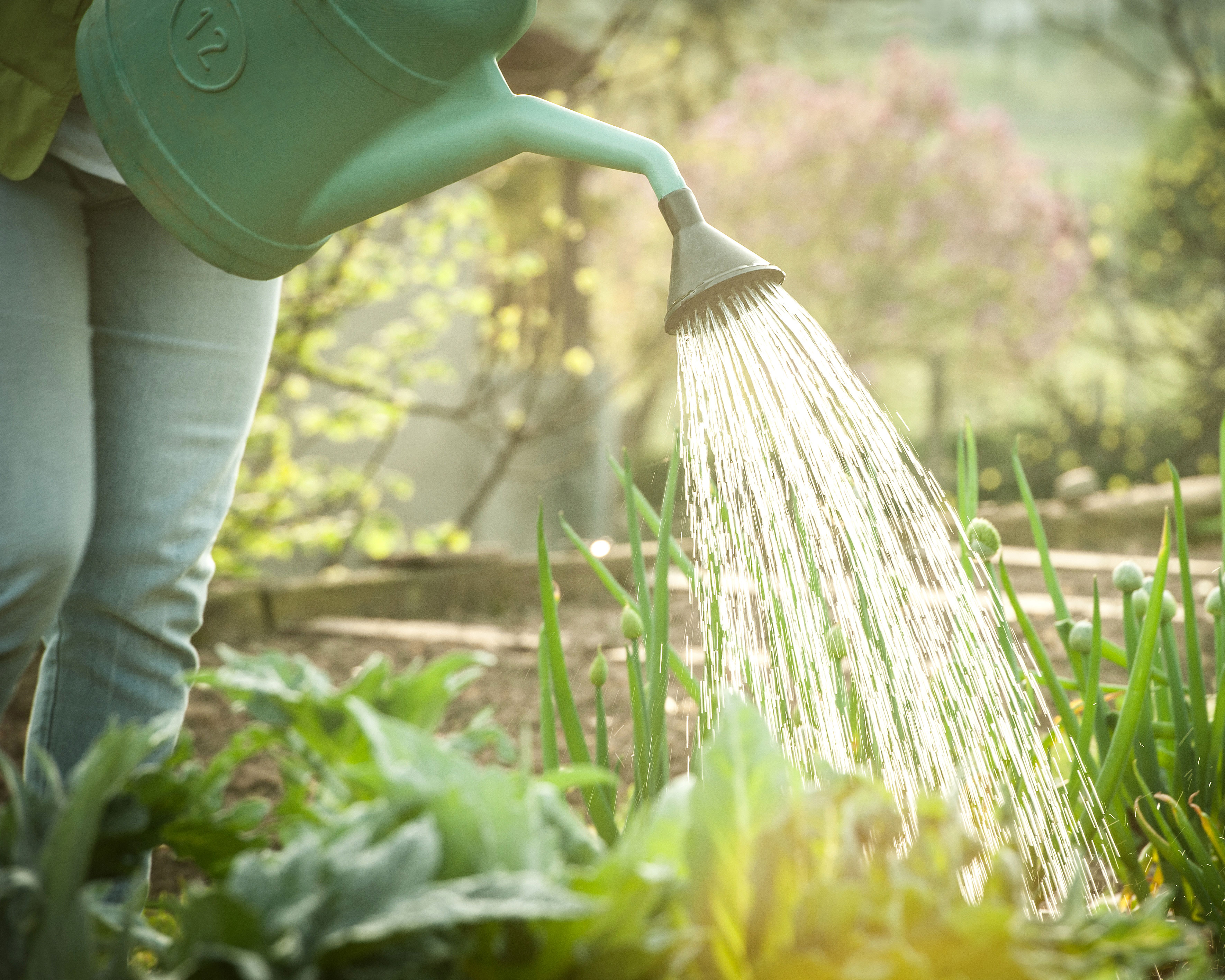
When you’re growing asparagus, you’ll need to keep them well watered. Feed with fertilizer in early spring, and then again after harvesting.
Weed the bed by hand, as a hoe can damage the delicate roots. If you’re growing a male crop, pull out any female plants that may appear.
Depending on the variety, asparagus can grow to around 3 feet tall, so you may need to stake them to protect them from damage in windy conditions.
Harvesting asparagus
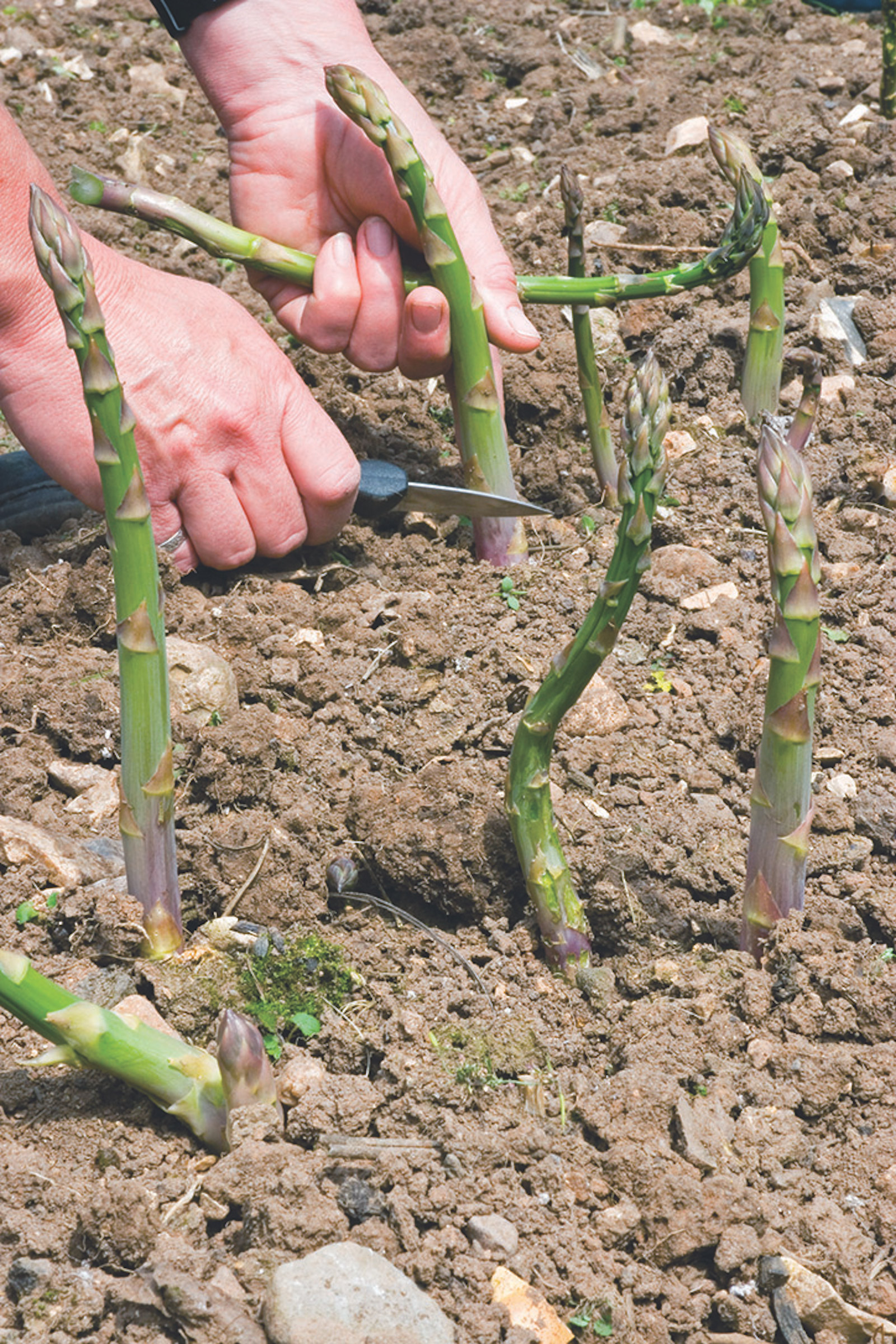
‘If you start with healthy crowns planted when the soil has warmed up in spring you will take your first – modest – harvest the following year, a more substantial but restrained one the following year, and tuck in with relish in year three,’ says Monty Don, who has established two asparagus beds at his Longmeadow garden.
Asparagus will be ready to harvest for eight weeks, from mid April in the third year of growth. To harvest asparagus, cut the individual spears with a sharp knife, 1 inch below the surface of the soil. Cut every 2 to 3 days in warm weather.
‘Each established plant can produce 30 or 40 spears over the season,’ Don continues. ‘In warm, humid weather the spears can grow 9 inches in 24 hours, whereas in a cool week there can be very little growth.’
Caring for asparagus after cropping
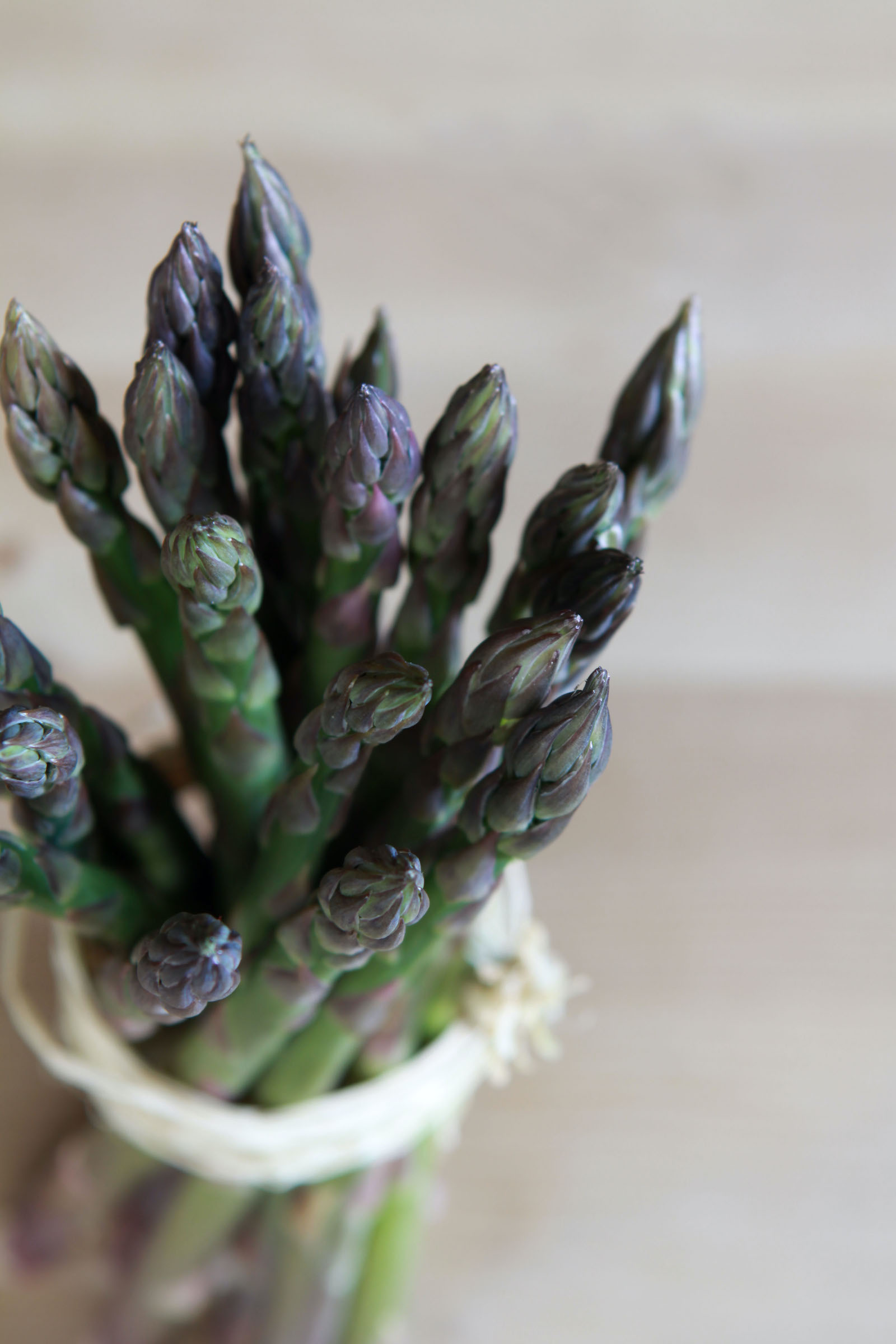
When the harvest season is finished, in July, leave the shoots to grow. They will develop pretty foliage – asparagus fern – which can be picked and used to make a summer wreath. However, it’s best to leave most of the foliage in place, as the leaves will take nutrients from the sun into the roots to enrich and strengthen the plant.
Cut back the asparagus foliage in the fall when it begins to turn yellow.
How long does it take to grow asparagus
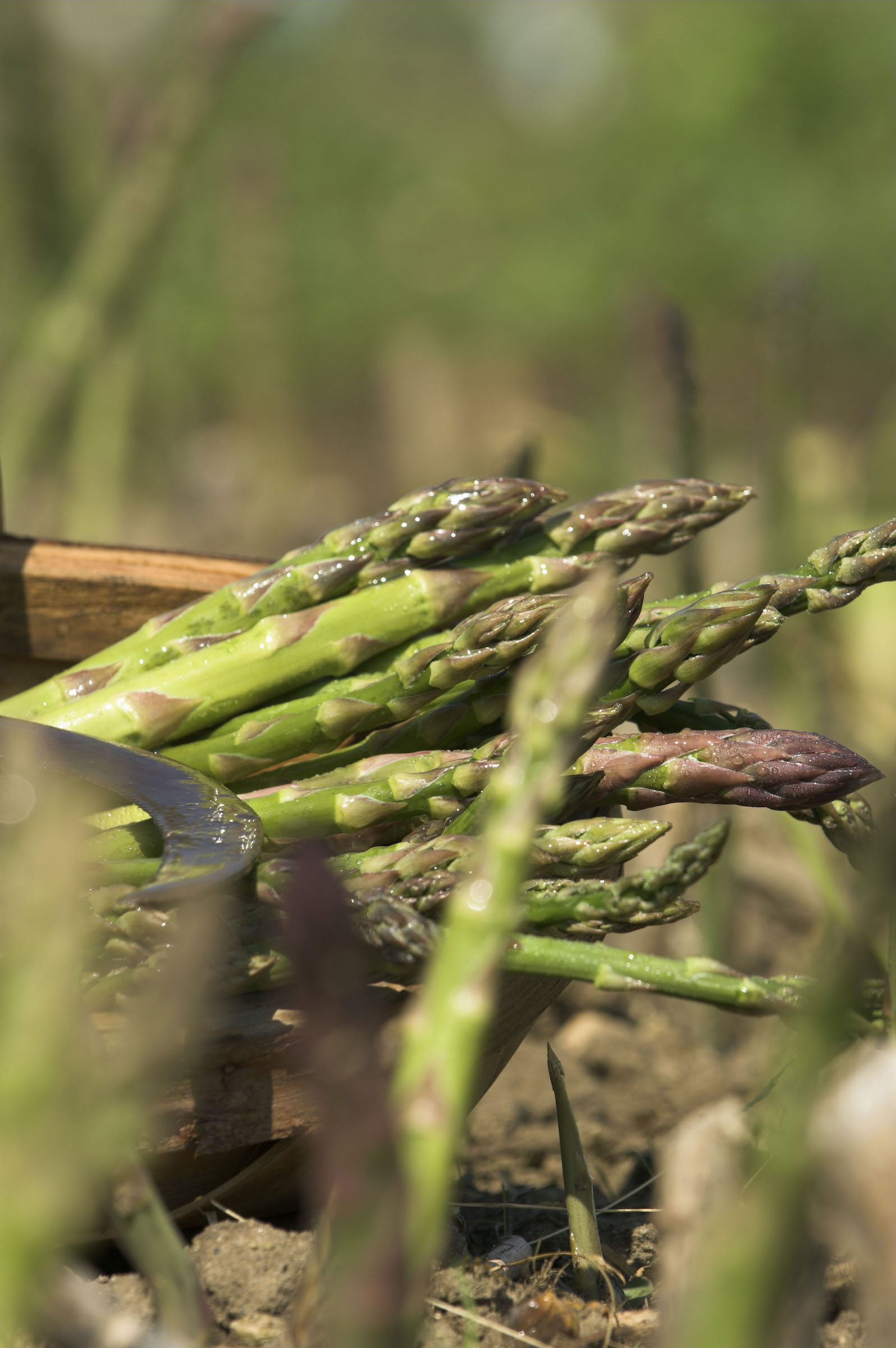
It takes three years after planting for a full crop of asparagus to be ready to be harvested, although you may be able to cut a few spears in the preceding years.
Once your plants begin to crop fully, they will produce spears for an 8-week season, from mid May to mid June.
Is asparagus easy to grow?
Yes, although this isn't a fast-growing plant. The main issue is drainage, so the plants should be planted in a ridge of soil that stops the roots from becoming too wet.
Sign up to the Homes & Gardens newsletter
Design expertise in your inbox – from inspiring decorating ideas and beautiful celebrity homes to practical gardening advice and shopping round-ups.
Andrea has been immersed in the world of homes, interiors and lifestyle since her first job in journalism, on Ideal Home. She went from women's magazine Options to Frank. From there it was on to the launch of Red magazine, where she stayed for 10 years and became Assistant Editor. She then shifted into freelancing, and spent 14 years writing for everyone from The Telegraph to The Sunday Times, Livingetc, Stylist and Woman & Home. She was then offered the job as Editor on Country Homes & Interiors, and now combines that role with writing for sister title homesandgardens.com.
-
 How to fertilize magnolias – garden experts reveal the secrets to better blooming, and timing is critical
How to fertilize magnolias – garden experts reveal the secrets to better blooming, and timing is criticalMagnolias are famed for their spring flowers, and feeding at the right time can give trees a boost
By Thomas Rutter Published
-
 Sarah Jessica Parker's spring tablescape epitomizes lived-in luxury with art deco candle holders and a statement tablecloth – it's easy (and affordable) to recreate
Sarah Jessica Parker's spring tablescape epitomizes lived-in luxury with art deco candle holders and a statement tablecloth – it's easy (and affordable) to recreateKick off the season right with a warm table that invites guests into your home by emulating Sarah Jessica Parker's luxe and cozy scheme
By Sophie Edwards Published